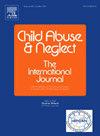Balancing risk and resilience: Amplifying the voices of the children and mothers in Kalighat red light area
IF 3.4
2区 心理学
Q1 FAMILY STUDIES
引用次数: 0
Abstract
Background
Irrespective of the surrounding debate on the morality of sex work as a profession, academia has largely overlooked the toxic and violent environment that surrounds the children of female sex workers in red light areas. For instance, the existing literature seems to be only driven by objectives (and often in singularity) like access to education, models of family and care, and not paying enough attention to the voices of the children, their experiences wants and desires.
Objective
The study aimed to amplify the voices of the children of the Kalighat red light area, gain a holistic understanding of the challenges they face, and plan and implement interventions that prioritize their well-being. In the process, it also delves deep into understanding how female sex workers (who are also mothers) protect their children from the pervasive violence faced in their setting.
Participants and setting
The study includes 10 consenting children (aged between 12 and 17) and 5 female sex workers from the Kalighat red light area in West Bengal, India.
Methods
The researcher conducted Focus Group Discussions (FGDs) with the children of female sex workers and carried out in-depth interviews with the female sex workers themselves.
Results
The findings of the study uncover six themes namely, Unveiling Hidden Trauma; Barriers to Education and Social Mobility in Kalighat Red Light Area; Challenges in Establishing Personal Boundaries; Self-Awareness and Personal Agency as a Coping Mechanism; Adaptive Resilience and Coping Strategies; and Vigilance and Long-Term Planning.
Conclusion
The voices of children in the Kalighat red light area illuminate the pressing need for holistic interventions.
平衡风险和复原力:放大卡利加特红灯区儿童和母亲的声音
尽管围绕性工作作为一种职业的道德问题展开了争论,但学术界在很大程度上忽视了红灯区女性性工作者的孩子所处的有毒和暴力环境。例如,现有的文献似乎只被目标(通常是单一的)所驱动,比如获得教育、家庭模式和照顾,而没有足够关注孩子的声音、他们的经历、需求和欲望。本研究旨在放大卡利加特红灯区儿童的声音,全面了解他们面临的挑战,并计划和实施优先考虑他们福祉的干预措施。在这个过程中,它还深入探讨了女性性工作者(同时也是母亲)如何保护她们的孩子免受她们所处环境中普遍存在的暴力侵害。该研究包括10名自愿参加的儿童(年龄在12至17岁之间)和5名来自印度西孟加拉邦Kalighat红灯区的女性性工作者。方法对女性性工作者的子女进行焦点小组讨论,并对女性性工作者本人进行深入访谈。结果研究结果揭示了六个主题,即揭示隐藏的创伤;Kalighat红灯区教育障碍与社会流动建立个人界限的挑战自我意识与个人能动性作为应对机制适应弹性与应对策略研究警惕和长期规划。结论卡利加特红灯区儿童的声音表明了采取综合干预措施的迫切需要。
本文章由计算机程序翻译,如有差异,请以英文原文为准。
求助全文
约1分钟内获得全文
求助全文
来源期刊

Child Abuse & Neglect
Multiple-
CiteScore
7.40
自引率
10.40%
发文量
397
期刊介绍:
Official Publication of the International Society for Prevention of Child Abuse and Neglect. Child Abuse & Neglect The International Journal, provides an international, multidisciplinary forum on all aspects of child abuse and neglect, with special emphasis on prevention and treatment; the scope extends further to all those aspects of life which either favor or hinder child development. While contributions will primarily be from the fields of psychology, psychiatry, social work, medicine, nursing, law enforcement, legislature, education, and anthropology, the Journal encourages the concerned lay individual and child-oriented advocate organizations to contribute.
 求助内容:
求助内容: 应助结果提醒方式:
应助结果提醒方式:


